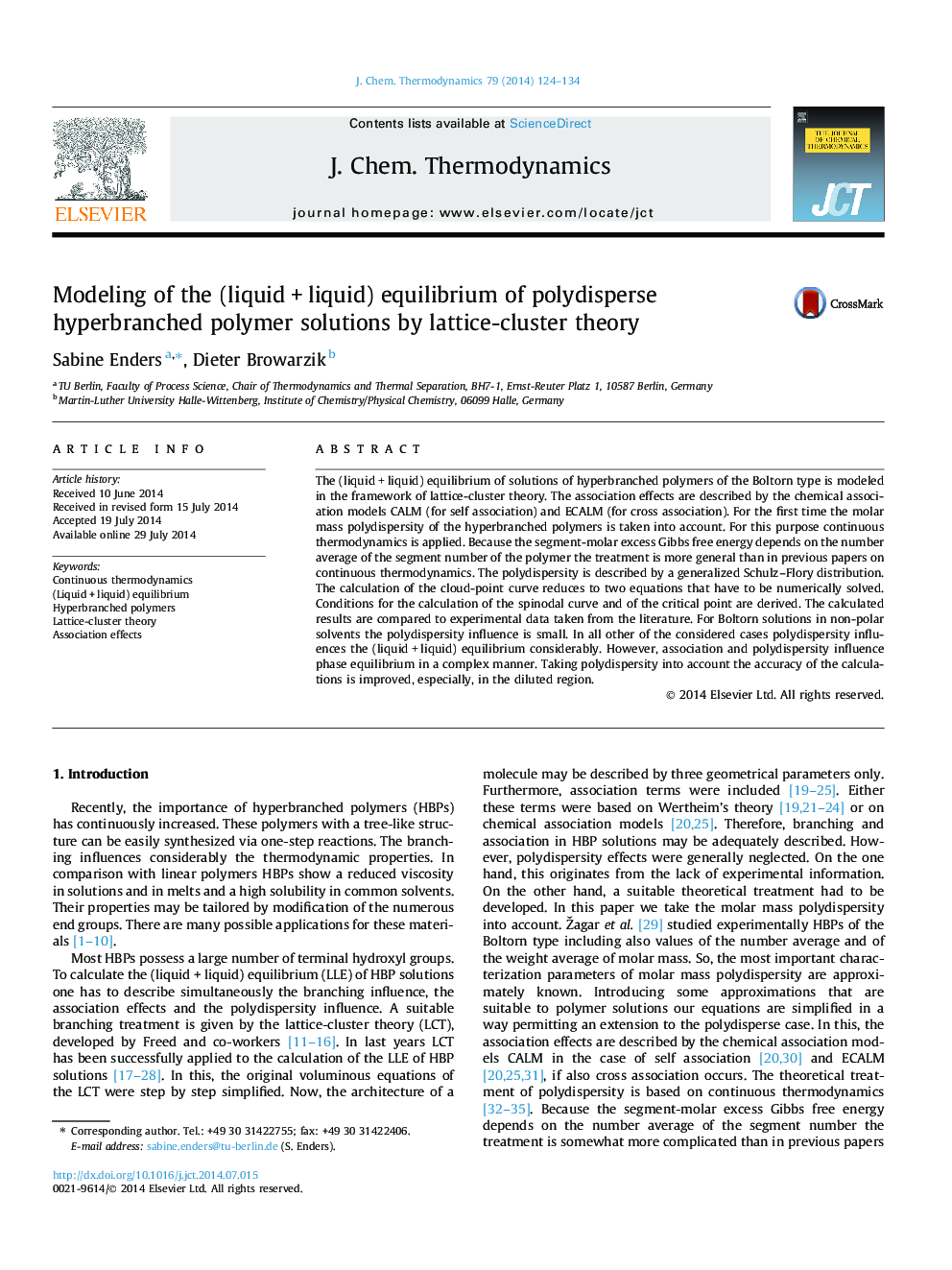| Article ID | Journal | Published Year | Pages | File Type |
|---|---|---|---|---|
| 215333 | The Journal of Chemical Thermodynamics | 2014 | 11 Pages |
•Calculation of the (liquid + liquid) equilibrium of hyperbranched polymer solutions.•Description of branching effects by the lattice-cluster theory.•Consideration of self- and cross association by chemical association models.•Treatment of the molar-mass polydispersity by the use of continuous thermodynamics.•Improvement of the theoretical results by the incorporation of polydispersity.
The (liquid + liquid) equilibrium of solutions of hyperbranched polymers of the Boltorn type is modeled in the framework of lattice-cluster theory. The association effects are described by the chemical association models CALM (for self association) and ECALM (for cross association). For the first time the molar mass polydispersity of the hyperbranched polymers is taken into account. For this purpose continuous thermodynamics is applied. Because the segment-molar excess Gibbs free energy depends on the number average of the segment number of the polymer the treatment is more general than in previous papers on continuous thermodynamics. The polydispersity is described by a generalized Schulz–Flory distribution. The calculation of the cloud-point curve reduces to two equations that have to be numerically solved. Conditions for the calculation of the spinodal curve and of the critical point are derived. The calculated results are compared to experimental data taken from the literature. For Boltorn solutions in non-polar solvents the polydispersity influence is small. In all other of the considered cases polydispersity influences the (liquid + liquid) equilibrium considerably. However, association and polydispersity influence phase equilibrium in a complex manner. Taking polydispersity into account the accuracy of the calculations is improved, especially, in the diluted region.
Graphical abstractFigure optionsDownload full-size imageDownload as PowerPoint slide
